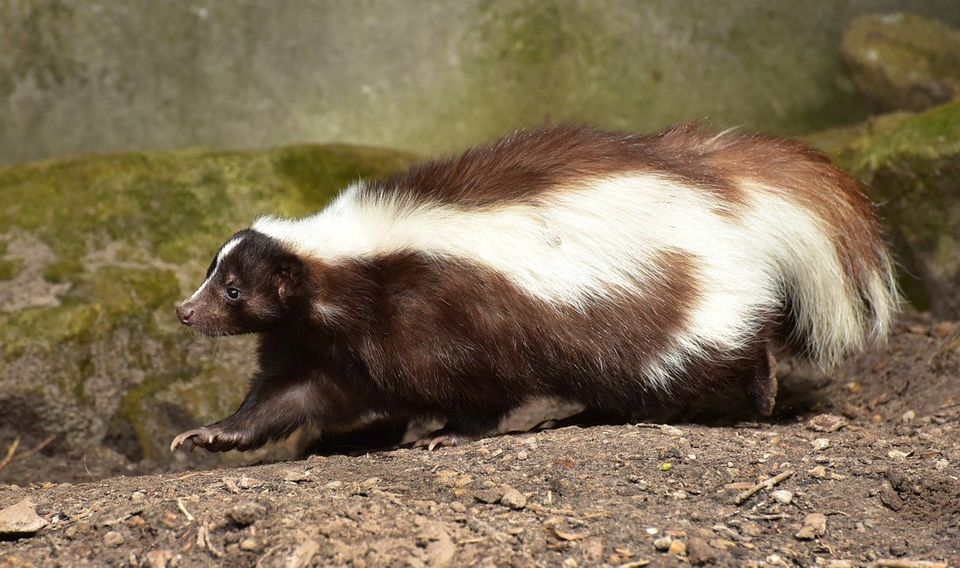I've Been Skunked! Now What?!
Sprayed by a skunk? Here are some suggestions
I've Been Skunked, Now What?
Skunks are a pest in the yard for a number of reasons, like getting into the garbage or digging up the flower bed in search of grubs. And of course, that one unique quality that makes a skunk stand out from all other wildlife: the spray. When you unexpectedly come across a skunk in your yard, it's easy to
Dealing with Skunk Smell
The compounds in skunk spray will not just rinse off, and you will need to use the right chemicals to break down the odor molecules. Don't worry, you can get these things at the drug store. You will need a bottle of hydrogen peroxide (check the first aid section). A quart will make up a suitable batch of skunk-removing wash, along with ¼ cup of baking soda and a squirt or two of dishwashing liquid. Mix it all together in a large bowl, and give yourself a serious scrub down in the tub.
The peroxide is safe enough on the skin but keep it out of your eyes. Rinse this mixture through your hair if you have to, but do not leave it on for very long. The peroxide will bleach.
Once you've washed down, rinse off thoroughly. If you are still smelling skunk, make up a fresh batch of the solution and give yourself a second scrub over. Don't use the same solution again because the chemical reaction that makes it work will die down quickly.
Don't forget that skunk spray can be dangerous not just smelly. When you are sprayed, take extra care not to touch your eyes or anywhere else on your face if you have spray on your hands.
What About Pets Sprayed by a Skunk?
That takes care of you, but it's more likely a pet can get attacked by a skunk and will have to be taken care of. With a layer of fur, it's not quite the same as de-skunking yourself.
You can use the peroxide mixture we already mentioned, but it can be a little harder to manage due to the potential bleaching action on the fur. Instead, try one of the many products on the market for cleaning skunk off a pet. They are formulated to work on a dog or cat. Tomato juice may work but it's not a sure thing.
The oils in skunk spray make it “sticky” and quite durable. If you are thinking that it will wear off on its own, you will be living with that smell for several weeks. It definitely needs to be dealt with immediately.
Prevent Skunk Spraying Mishaps
Ideally, you won't have too many skunks roaming around in your yard that this is going to be a problem for you. Keep your garbage locked up, and a fence may help to keep them off the property. Or you can use scented repellent productsto do the work without having to start a fencing project.
You can also protect against skunk spray by using a little caution. Skunks don't aggressively run around spraying people, but only use this tactic if startled or cornered. So if you see one rambling around, just leave it alone.
Critter Repellent All Natural Animal Repellent Blog














